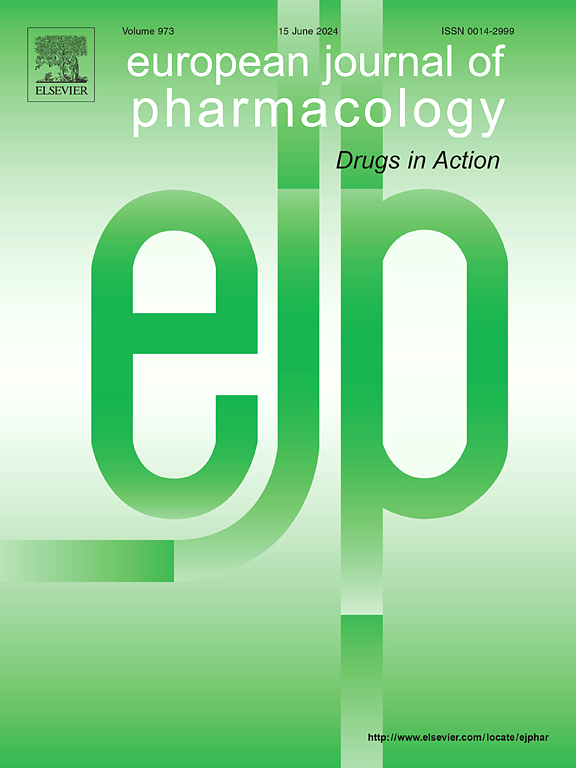Mice lacking the serotonin transporter do not respond to the behavioural effects of psilocybin
IF 4.2
3区 医学
Q1 PHARMACOLOGY & PHARMACY
引用次数: 0
Abstract
Background and purpose
Psilocybin is a serotonergic psychedelic with therapeutic potential for several neuropsychiatric disorders, including depression and anxiety disorders. Serotonin transporter (5-HTT) knockout mice (KO) are a well-validated mouse model of anxiety/depression and are relevant to both chronic treatment with serotonin transporter reuptake inhibitors (SSRIs) and polymorphisms in the serotonin transporter-linked polymorphic region (5-HTTLPR) associated with depression/anxiety and resistance to classic antidepressant treatments. However, there is yet to be a study assessing the effect of psilocybin in 5-HTT KO mice.
Experimental approach
We investigated the effects of a single dose of psilocybin (1 mg/kg) on locomotor activity and the head-twitch response as well as anxiety- and depressive-like behaviour in KO versus wild-type (WT) mice using the light-dark box and Porsolt swim test respectively.
Key results
We found that both the psilocybin-induced head-twitch and hyperlocomotor responses observed in WT mice were completely absent in KO animals. In female WT mice only, psilocybin was also able to block the weight loss observed one day after intraperitoneal injection. While psilocybin did not alter anxiety- and depression-like behaviours for both genotypes, we revealed a genotype-specific trend for a main effect of treatment for WT females (p = 0.054) in the Porsolt swim test. Finally, we found that only female KO mice exhibit anhedonia-like behaviour in the saccharin-preference test.
Conclusion and implications
Our findings highlight the complexity of psilocybin's effects and suggest that functional integrity of 5-HTT is essential for psilocybin's acute behavioural effects. This could also have implications for pharmacogenetics, including individuals with polymorphisms or mutations in 5-HTT.
求助全文
约1分钟内获得全文
求助全文
来源期刊
CiteScore
9.00
自引率
0.00%
发文量
572
审稿时长
34 days
期刊介绍:
The European Journal of Pharmacology publishes research papers covering all aspects of experimental pharmacology with focus on the mechanism of action of structurally identified compounds affecting biological systems.
The scope includes:
Behavioural pharmacology
Neuropharmacology and analgesia
Cardiovascular pharmacology
Pulmonary, gastrointestinal and urogenital pharmacology
Endocrine pharmacology
Immunopharmacology and inflammation
Molecular and cellular pharmacology
Regenerative pharmacology
Biologicals and biotherapeutics
Translational pharmacology
Nutriceutical pharmacology.

 求助内容:
求助内容: 应助结果提醒方式:
应助结果提醒方式:


